IN the eerie quiet Sergeant Rod Stanley, his colleagues and their families, stood in the darkness on the night of February 2/3, 2011, and gazed up at an unlikely smattering of stars.
The front of the Tully police station was strewn with children’s toys after the entire front wall of the nearby police accommodation was ripped off and the toys belonging to an officer’s young children were flung into the storm.
For five minutes they stared around the area in horrified wonder as Cyclone Yasi’s eye drifted overhead, before scurrying back inside the shelter of the sturdy Bryant Street station which has weathered its fair share of big storms in its almost 30 years.
Around 30 people – police, their partners, their children and a menagerie of cats, dogs and other assorted pets crammed into the station, listening to the “jet engine” roar of the winds which reached up to 250km/h on that fateful night.
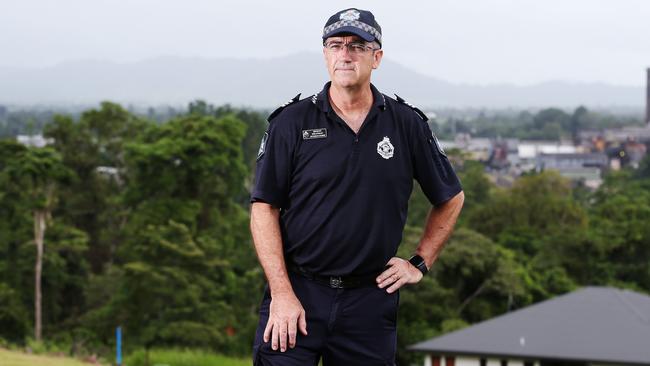
Desperate phone calls were coming in from people living on the waterfront who had been urged to evacuate but refused, begging to be pulled out, but there was nothing officers could do before the system passed.
Some even cruelly rang the media falsely claiming someone was dead and no one was coming to help them.
At 6.30am with wind gusts still up to 100km/h two officers from the station began driving south, dodging huge trees which had fallen across the Bruce Highway. Later that day Sgt Stanley surveyed the area in a helicopter and was gobsmacked by what they saw.
“I’d never seen (a cyclone) where every tree within about 50km had been completely stripped,” he said.
“You saw some terrible stuff you don’t want to talk about.”
In the coming days the station would field calls from across the country from relatives desperately trying to track down loved ones.
Police used the chopper to reach rural properties to check on the occupants.
Sgt Stanley recalls having to sift through destroyed homes, lifting pieces of tin and praying they would not find bodies underneath.
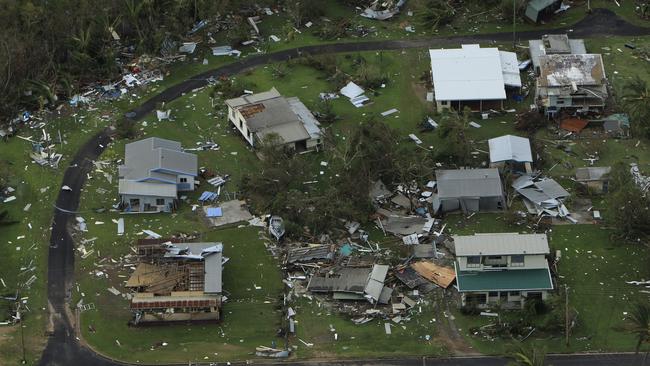
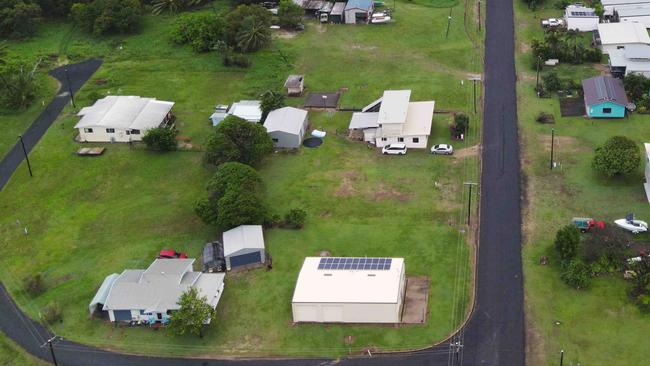
He said from the worst things, he also saw the best in people – recalling a moment when a woman working at a local service station just handed over a butane cooker to a desperate mum trying to feed her family after losing everything.
“Far North Queensland people are really just a tremendous lot,” he said.
Sgt Stanley will clock up his 12th year in Tully this year and said Yasi literally reshaped the entire town – both physically,but also psychologically as locals struggled with the mental scars.
“But after Larry and then this we are better prepared, the houses are better with the standards you have to meet now; they’restructurally sound,” he said.
“And it’s the North Queensland way — you just get on with it.”
FEAR WAS REAL AS STORM NEARED
FIVE years earlier Innisfail had been the unwelcome focal point of Cyclone Larry, so when another, even more powerful storm seemed to be heading their way, the fear was palpable.
Firefighter Steve Wilson has lived in the Cassowary Coast town for more than 30 years and still remembers the underlying tension as Yasi approached – both among his colleagues and the entire town.
On February 3, 2011, his team, their families and pets locked themselves in the fire station – a sturdy building on Fitzgerald Esplanade – reinforcing the front door with big metal beams.
“Once the winds hit 80km/h, no trucks are allowed out the door,” he said.
“The winds were absolutely roaring.
“We constantly went around and checked all the windows and doors.”
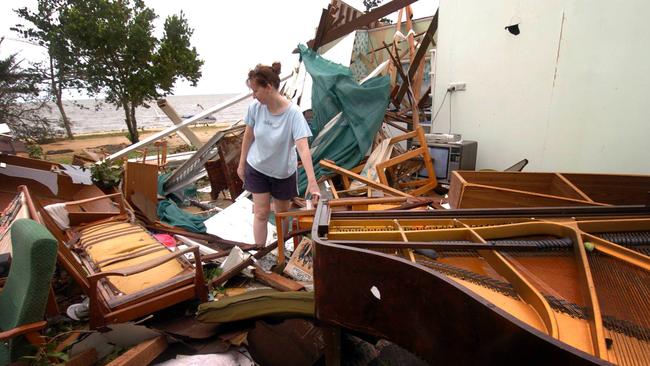
He recalled in Larry, the building shook with such force he and his daughter watched as the screws in the windows literally vibrated loose and, outside, an exploding transformer became a fireball.
He said he feared his town would face the same grim fate five years later in Yasi, but as they emerged from the station the next morning, thankfully there was little damage.
It was only when he headed south to assist in the coming days he realised the “actual track” of the cyclone.
Hundreds of firefighters would fly from across the country in the following days and weeks to help as they hosed out homes and began the mammoth clean-up.
“There were some big moments when you went quiet and people looked back at the mess they had to clean up,” he said.
“What you don’t see is how many families you lose, people who’ve got to move out for work or industries which have been lost.
“After this massive push there is a massive emptiness and I think Tully and Innisfail are still suffering.”

Helping co-ordinate the clean-up was the Far North’s SES boss Wayne Coutts who has been at the helm of the region’s response to major weather events for more than a decade.
While some residents get excited as cyclones approach, he does not have that privilege.
“I get worried about if we have done enough to make sure we’re properly prepared,” he said.
“If it comes across (where you live) it has changed your life.”
Mr Coutts said the storm surge near Cardwell shocked him the most post-Yasi.
He had been in the area leading up to the crossing, retreated, but returned after it passed to begin the immense recovery.
“I hadn’t seen that in a populated area before,” he said.
“It was intense.”
Up to 300 SES volunteers were on the ground every day in the immediate aftermath, and some would still be there weeks afterwards.
HOW CAIRNS PREPARED AS STORM LOOMED
FROM space it must have looked terrifying – a spinning white behemoth in the Coral Sea that inched inexorably westwards and could have swallowed the top half of the state.
Premier Anna Bligh warned the state: “This is a very, very serious threat.”
And Cairns braced itself, nervous that it had lived a charmed life when it came to cyclones and now, surely, the big one, the monster, would hit.
Then police Assistant Commissioner Katarina Carroll did not mince words about the scale of what the Far North was about to experience.
“At the moment, there’s an extraordinary amount of planning for this event because it is unprecedented in scale,” she said.

“The weather bureau has never seen anything like it before. The area it will take in is huge.”
Thousands of kilometres away in Afghanistan, deployed soldiers with family and friends in the Far North, nervously eyed the weather reports back home.
One, due to rotate back to Australia the next day and move to Cairns in a matter of weeks, wondered if he and his fiancee would be moving to another war zone.
Premier Bligh gave the green light to evacuate and 30,000 residents were urged to seek shelter from Yasi, a “monster killer storm”, with ocean storm surges of up to 10m expected.

The worst was expected, with Cairns Base Hospital and Cairns Private Hospital transferring patients and the military asked to provide bedding and food for those sheltering in evacuation centres across the Far North.
In the Tablelands, local governments urged Cairns residents crowding motels to stay down the hill.
“When we say ‘go high’, they don’t have to come up here,” a council spokeswoman said.
“They can go high in Cairns.”
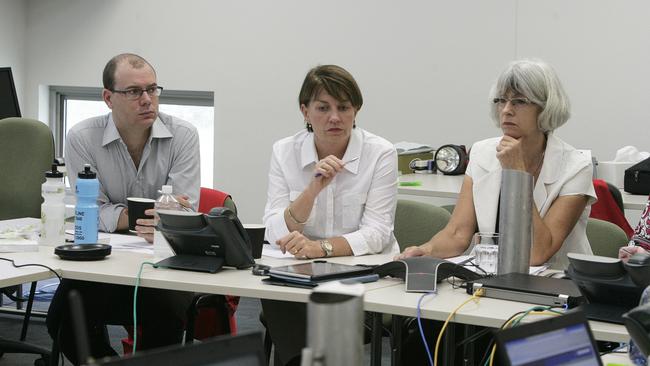
Tablelands residents stripped bakeries and grocers bare and braced for the grey leviathan from the sea.
In the event, Yasi turned her wrath to southern communities including Cardwell, the perennial punching bag for tropical storms.
A decade later, Lindsay Hallam still remembers the sight that greeted him the morning after Yasi made landfall.
“None of us had gotten an ounce of sleep,” Mr Hallam said.
“There were trees snapped off 10-15 feet above ground level.
“The storm surge had come over the road; a lot of the foreshore and highway had been washed away and there was mud everywhere.
“You’d look around and think, ‘where do we start?’.”


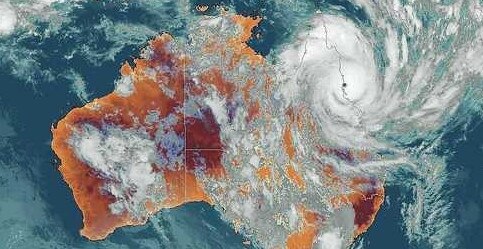
Add your comment to this story
To join the conversation, please log in. Don't have an account? Register
Join the conversation, you are commenting as Logout
How does it work? What are the dangers? Qld’s sunset clause explained
The sunset clause continues to cause angst between those involved in the building industry. Here’s what it all means.
‘Never in 30 years of politics’: Labor MP’s old school mentor
Leichhardt MP Matt Smith will start his journey as a federal Labor parliamentarian, but only after a post-election orientation delivered to him by the other side – a likely Australian first.